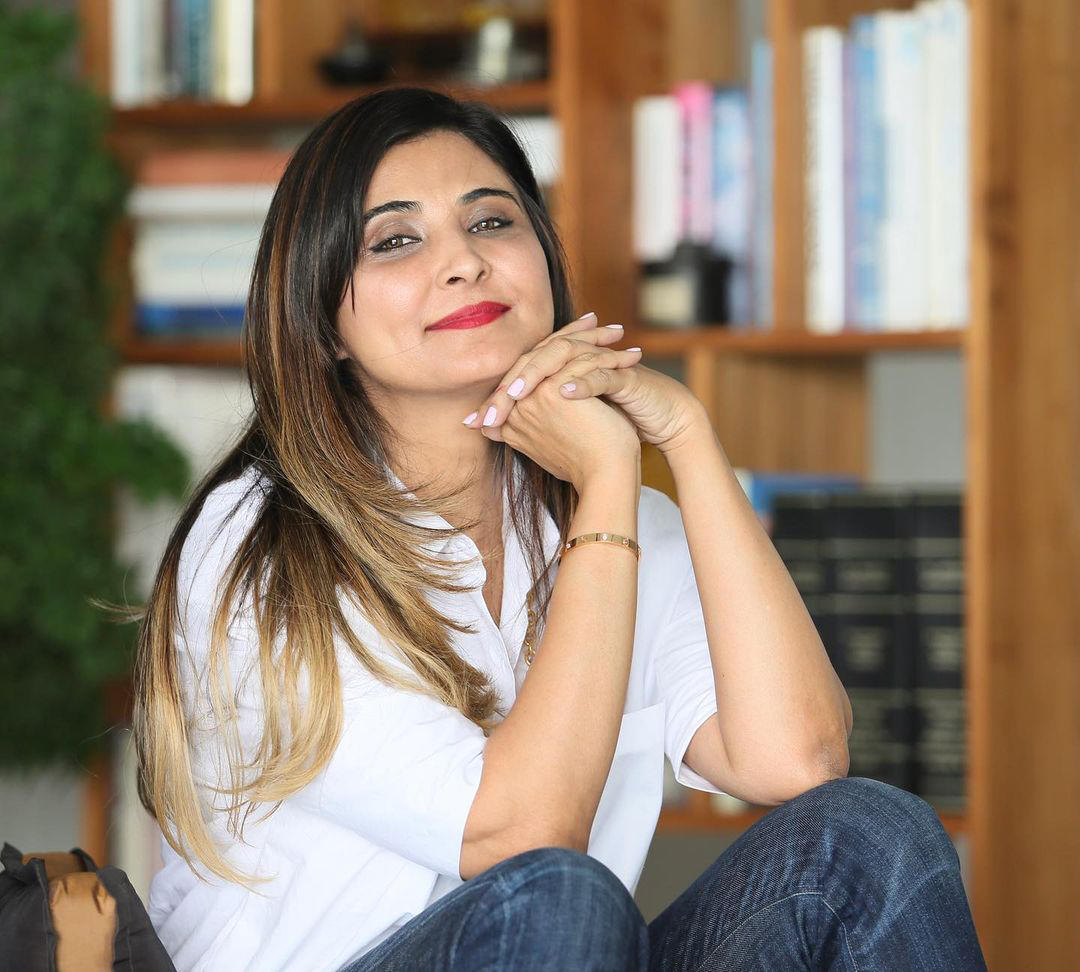
WHAT IS AYURVEDA? WITH KAVITA KHOSA
THE LANE CRAWFORD PODCAST EPISODE 3
In our third episode of the Lane Crawford podcast, our Head of Content, Christel, chats with the multitalented and multifaceted Kavita Khosa, a former Wall Street lawyer turned Iyengar yoga teacher, conscious beauty brand founder, accidental entrepreneur, women’s rights campaigner and, most importantly for this podcast, a practitioner of the ancient art of Ayurveda.
In 2020 all sorts of healing modalities and wellness practices are coming to the fore; and you may have heard of Ayurveda amongst these. The amazing Kavita sat down to give us a crash course in Ayurveda 101; where it comes from, what its basic principles are, and some of the ways it can be applied to our modern lives.
Listen to episode 3 of our podcast above, or read the transcript of it below, to discover a little bit more about Ayurveda and all the incredible ways that it can be used.
CHRISTEL: So, Kavita, welcome to the Lane Crawford podcast!
KAVITA: Thank you so much. I think this is going to be fun. I'm going to try and make it fun and easy and accessible. So let's see how we get on.
CHRISTEL: Absolutely. So tell us a little bit about who you are and what you do, firstly.
KAVITA: I am an accidental entrepreneur. So I am the founder of Purearth, but my passion and my interest lies in everything organic, connected to the earth, connected to the soil and I love botanicals. You know, playing alchemist in my lab. So yeah, with the skincare brand that I have, and it's Ayurveda-based, my interest lies in natural healing and alternative medicine and remedies.
CHRISTEL: So, Ayurveda. Key word. I know this is a very deep and wide and ancient subject matter to speak about, but in modern terms and in 2020 with all that we have to deal with, can you succinctly tell me what even is Ayurveda? Is it a science? Is it a medicine? Is it a school of thought? What is it in a nutshell?
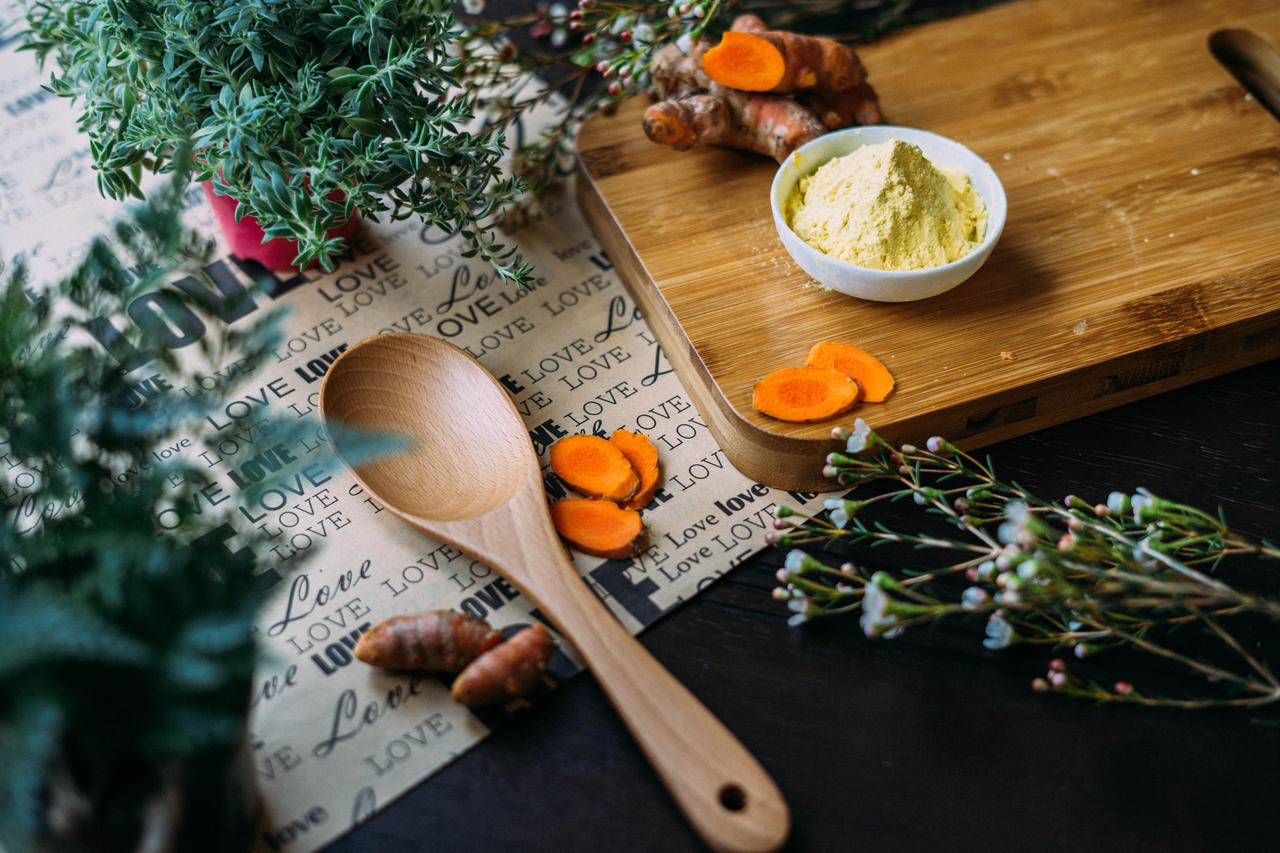
KAVITA: Ayurveda. It's a very vast, daunting, complex science, art, way of life. It originated from the subcontinent. The origins are unknown. They say the gods handed it down to sages and seers, who then handed it down to practitioners, and then they recorded these in some treatises and texts. Two main ones: Sushruta and Charaka. And from there, we have recipes and we have lifestyle tools. For today's purposes, I think we can simplify it. There are eight limbs.
I'd like to simplify it and just talk about kāyachikitsā which is, you know, lifestyle and diet and health and wellbeing and, of course, beauty, skin and hair. What Ayurveda says is that we are the human body. What you find in the universe, you will find in our human body. The human body is a microcosm, if you will. The universe is the macrocosm. So, it naturally then means that we have to live in sync, in cadence.
CHRISTEL: I find that beautiful. I think it's such a beautiful way to put it.
KAVITA: We have to be in sync with nature's rhythms. An analogy is the ocean. A wave can break away from the ocean and exist for a period of time and in space, separate from the ocean. But it cannot exist in eternity like that. It goes back into the ocean and merges back into the ocean. So, yoga is just one aspect of Ayurveda. And yoga means “union” of this microcosm, with the macrocosm. Ayurveda teaches us how to live healthily. So, according to Ayurveda, human lifespan should be 120 years.
CHRISTEL: Oh wow.
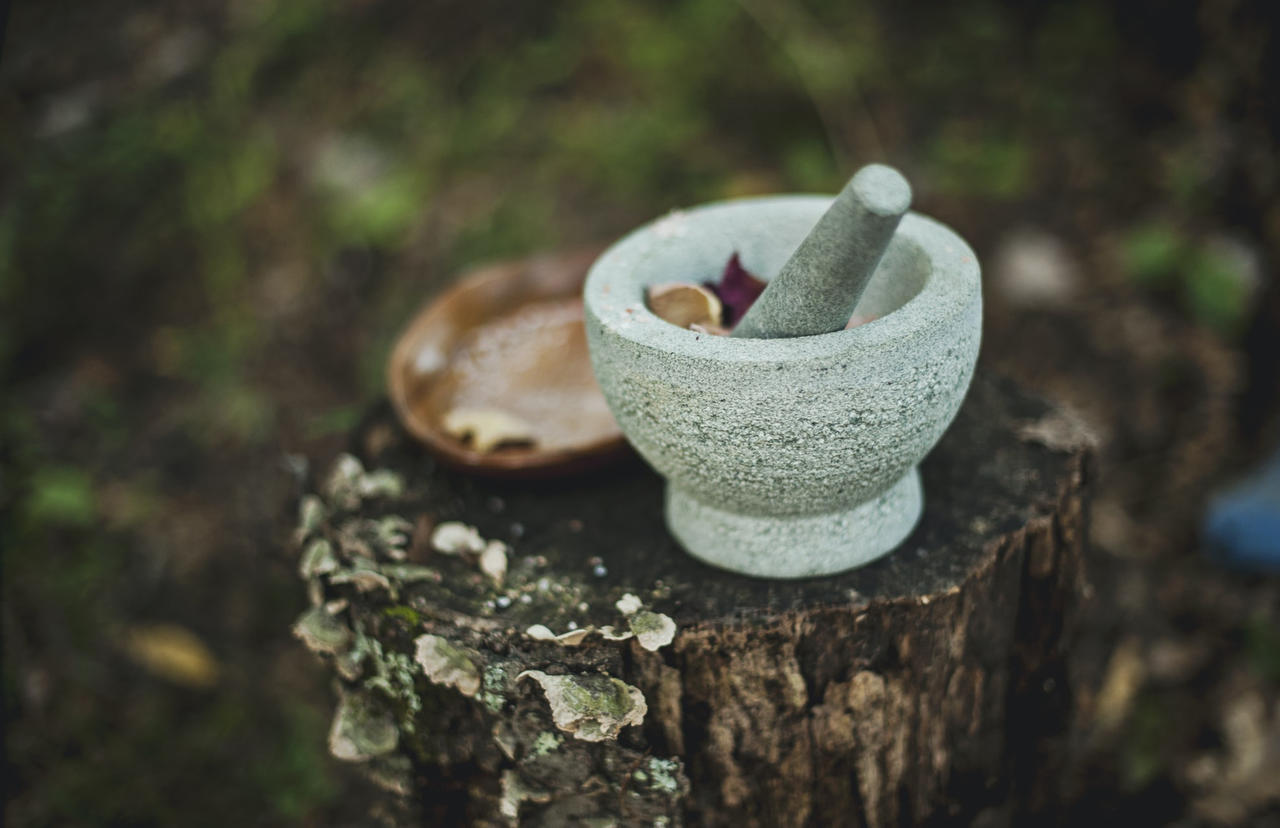
KAVITA: And it's about living healthily every single day until the day that you don't exist anymore. It's having radiance and vitality and health and beauty and all of that. And leading a full life. And it prescribes many ways that you do it.
That, in a nutshell, is what Ayurveda is. Now, Ayurveda talks about, if you go a bit deeper, three bodily humours. Vata, pitta, kapha. You will see in nature, and also season, ritucharya. And your daily routine is called dinacharya. You will see in nature, in the seasons, you see summer, spring, winter, autumn and monsoon. Similarly, in our body you can have different combinations of your constitution.
So you could be more fiery, or more relaxed and chilled, taking life easy and not that motivated. You don't have that fiery passion and ambition. Or you could be very indecisive and can't stay in one place, you just want to do too many different things and are not very focused, for example. Ayurveda, of course it's a far more deep and complex science. There's vata which is related to air and movement. There's pitta, related to fire and intelligence and curiosity. And kapha, which is more earth and water and mucus and sluggishness or being not so motivated or ambitious. So that's the constitution.
CHRISTEL: Right. So if I'm understanding correctly, a person can come in and out of these three constitutions?
KAVITA: True, true. The combination of each can change in your body and even your outlook, your mind, your outlook in life, your actual body as well. Even a pimple, you can actually analyse whether it's a vata, pitta or kapha. Yes. So, just delving into that. You have a pimple. You would see, is this a pimple on a 14-year-old or a 60-year-old? Which part of the face is the pimple in? Is the pimple red and inflamed? That is pitta. If it is black and dry, it's vata.
CHRISTEL: Interesting.
KAVITA: See: dry, air. You know? Red, it's pitta.
CHRISTEL: I see. So even a pimple is a microcosm of your body, which is a microcosm.
KAVITA: Yeah. It will tell you the nature of this pimple. And if it's full of puss, that is kapha. Right? Even down to a pimple. So, Ayurveda says every disease and management of disease or lifestyle diet, it's very individual. You know, there's no cookie cutter one-size-fits-all, you know?
And then you have the dhatus. Dhatus are your tissues and it starts with food, from which you build the essence of your body, from which comes blood, from which comes your bones and your muscles all the way down to the semen, which we're always told is the essence of life. There are seven of them and they all must be balanced. And if the first is unbalanced, then the next one is unbalanced.
Then it goes on, and therefore it manifests in different diseases. Like Ayurveda says, never suppress your bodily urges. For example, if you keep suppressing. If you're in meetings and you don't want to sneeze, you end up with that. See, a sneeze is a manifestation of vata—air, movement, right?
Sneezing, bowel movements, burping—that's air movement within the body. So, if you suppress it, there's derangement. It has to go somewhere. And so a sneeze it can manifest in shoulder pain and upper body pain.
CHRISTEL: In contrast to western practice when we take a headache tablet, all of these sorts of things that we're prescribed often are supposed to suppress pain or symptoms. So, if I'm understanding correctly, Ayurveda does not encourage this at all?
KAVITA: It is more preventive. It is prescribed to prevent. And of course once you can't prevent, you have to cure. But the idea is to prevent. In Ayurveda, you go to the root cause of the headache and don’t take a panadol to relieve that headache. You have to go down to the root cause of why. Something has manifested. And if you're in sync with the dietary or lifestyle recommendations or prescriptions according to Ayurveda, then you can balance and that's a healthy lifestyle. You can balance. You know how to balance it.
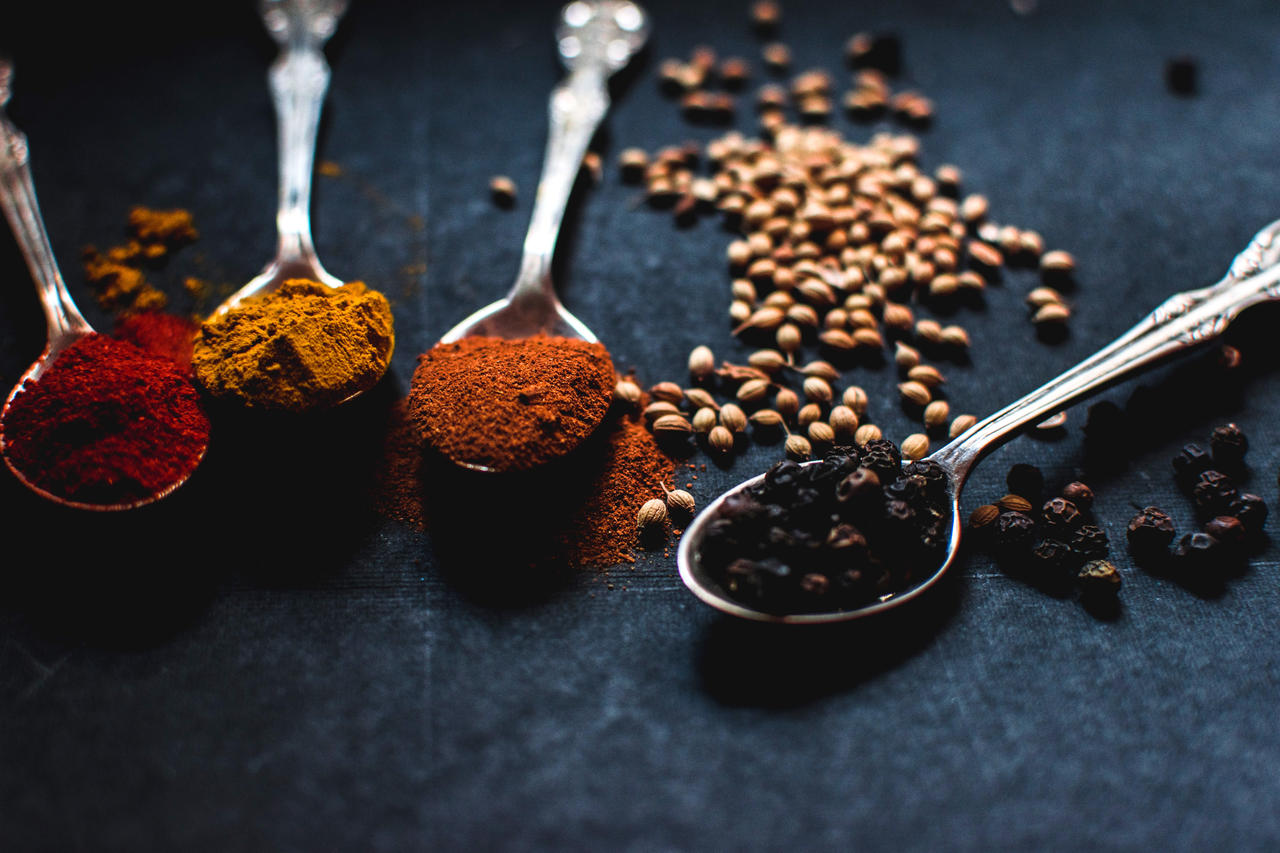
So for example, you have the seasons. Now, here in Asia with Chinese and Indian cultures, we know what is hot and cold when it comes to food. It's not temperature. Watermelon is cold, right? Papaya is hot. Papaya, mangoes. We use papaya as a meat tenderiser, why? Because it has so much heat in it and it can tenderise meat. Watermelon is cold. In the winters, coconut is cold, so a lot of Chinese and Indian mums and grandmas will say ‘don't have watermelon because you can catch a cold,’ which is true. So, we need to understand the nature of food and what we eat. And also, in a day cycle, it's divided into vata, pitta, kapha.
CHRISTEL: Wow.
KAVITA: A 24-hour cycle will have four kalas, you know, time spans. So, four hours each kala by six is 24. And then you have the three(doshas – vata, pitta, kapha), so you have from six to 10 in the morning(kapha kala or time of kapha dominance), 10 to then two(vata dominant), and so on...that's four-hour cycles. So, you’ll say ‘okay in the night I'm not going to eat, because that's time that my body is not going to be able to digest. It's time for my body to regenerate.’ When you understand it from an Ayurveda perspective, also eating seasonally and eating locally, you know what foods are good for which season. Like I said, it's very complex.
CHRISTEL: Yes. Yes. Wow, I mean it's something...not even a topic. It's a healing modality. It's a science. It's an art that is very much in touch with our natural state as well as the earth which, in this time that we're living, we need more than ever. It's something that we need.
KAVITA: Yes. It's timeless. It will continue to hold true no matter what era or age, or what part of the world.
CHRISTEL: Yeah. So for a completely lay person like myself, how do I even start to begin to apply or find some of these benefits that Ayurveda can clearly give us? How does one start to dip into this?
KAVITA: Very good question, and it's a difficult one. Because, you know Google is great.
CHRISTEL: Yes.
KAVITA: But a little knowledge is dangerous. So, going and doing your constitutional analysis or your dosha chart, whether you are predominantly vata and then pitta, through some online consultation form is dangerous. Because if you determine yourself to be type X, which may be erroneous, you're going to be living a lifestyle which is wrong for you. So, find a good Ayurvedic doctor.

CHRISTEL: So they're called doctors?
KAVITA: Oh, yeah. They have to go through a seven-year study just like normal doctors, and they have to study for seven years so they'll qualify with BAMS, Bachelors of Ayurvedic Medicine. You're in safe hands if you go to an Ayurvedic doctor. For example, I can do skin and hair but I'm not an Ayurvedic doctor. Next year, I'm hoping to start my doctorate.
CHRISTEL: Amazing.
KAVITA: But I am a skin and hair practitioner so I can definitely do an analysis for you because I've studied it. I have a certificate for it, I can look at your skin, I can look at your hair, but I would not do your pulse reading and say you are a swan or a frog(type of pulse). These are very, very experienced Ayurvedic doctors who can check your pulse just like the TCM (Traditional Chinese Medicine), you know?
But Ayurveda goes with prashna and darshana. Prashna is where I will ask you questions and then determine your constitution. And the other thing is darshana, is the colour of your skin, your nails, your eyes. Observing these things give an indication of what sort of constitution you are, and then we can prescribe. But for a lay person, it's best to understand your body and nature and the seasons and the day, and how you are supposed to bring this all in sync to have balance in your health.
Of course, what I'm saying is so simple and it's not really giving you anything. But you would have to go to an Ayurvedic doctor and get your constitution done.
CHRISTEL: Yes, so it's the first step essentially.
KAVITA: Yeah, so the doctor will tell you, let’s say, if you are more of a vata prakriti which, from a beauty or skincare perspective, is when you would tend to have dry skin and dry hair and in your old age you may have arthritis because of dryness and the synovial fluid in your joints, your bones, and there'd be a lot of movement where you're not very focused on what you’re doing. So, then you would be prescribed more emollient, more nourishing, more moisturising treatments.
If you do, for example, yoga. Many people are overdoing Ashtanga yoga. Especially women. It's going to dry you out. So, Ayurveda does things called ojas and tejas. How should I explain it? Ojas is that radiance and vitality of your whole being, you know? Some people radiate that.
They have an aura of that vitality and radiance that is inherent in all of us. You build that up through the fire, which is your digestive fire or ‘tejas’. A fire light is known to be bright. So, if you can build on that by eating the right foods for your constitution type and living a lifestyle, that will build it up. For example, I see a lot of girls who are already thin and wiry and young, and they are doing all this Ashtanga everyday and lifting weights and in the gym everyday. They may be thin and fit(muscular fitness) but that doesn't always equate to health and radiance and vitality – you're like a dried prune, you know? I don't know if that's an indication of health.
But you want to be radiating. You want to be glowing, and have this luminous vibrance in your being. It's not just your face or your hair or your nails or your eyes, but every pore in your body has to be radiating that vitality.
So, you will be dowsing that. You'll be drying up if you even take certain Ayurvedic practices like yoga in the wrong way. If you're a kapha type, then yes, do a lot more Ashtanga practices. But in today's world, even young people are more vata type. Why? Because as I said earlier, kapha? Earth, water. Vata is movement, air, you know? If you sit on a windy mountain for a long time and it's very windy, how do you feel?
CHRISTEL: Dry. Chapped.
KAVITA: Yeah, right?
CHRISTEL: Dehydrated.
KAVITA: If you sit in the middle(of the day) at one o'clock in the sun in the afternoon, how do you feel? Irritated, fiery...
CHRISTEL: Yes. Absolutely.
KAVITA: Agitated. That's the nature of pitta.
CHRISTEL: Very interesting.
KAVITA: In the winters we tend to be more slow and sluggish, and there's not much sun so that's kapha. If one understands this and one understands foods, it all corresponds. Like I said at the start...
CHRISTEL: Balancing.
KAVITA: Yes, nature and us. We are part of nature. We need to understand how nature works, the season, how our body is comprised, ‘what is my constitution?’ and ‘where am I at’? Like a young child, a little toddler has got coughs and colds all the time, right? Runny nose and coughs and colds in children. Because that's the nature [of a child] at that time.
A little child, youth, hormones raging and fiery and anger and fire(pitta). Old people are just, you know, there's more vata.
CHRISTEL: If you can then explain a little bit about how you've applied this practice of Ayurveda into Purearth and your skin care endeavor?
KAVITA: Yeah. Today, even a lot of young people are saying they have acne breakouts but their skin's dry. A lot of young clients, even teenagers, their skin is dry, yet they're prone to acne breakouts. So it's the pitta. Your age is the age of pitta, but your constitution at the time of your birth, actually before your birth and at the time the sperm meets the ova, is the time that your constitution is determined. Vata, pitta, kapha. Of the three, that combination, for you, is determined at that time and that never changes throughout your life. Never. That's called prakruti. Prakruti means “nature”. Vikruti is “against nature”.
As we live our lives, it can change. So, if I'm going to smoke and drink a lot and have stress and not a healthy lifestyle, that constitution will change.
If my constitution is actually quite weak at the time of my birth, but I take good care of my health and I'm in balance with nature, I'm going to be able to overcome that to a large extent. So it's nature and nurture, right?
You have genetics and then you have a gene pool and then you have how you maintain yourself, for example. Only a very experienced Ayurvedic doctor can tell you what your prakruti is, and then (there is) your vikruti. Today, if you are 50 and you are not living in your native land where you were born and you're eating foods that are not native to your DNA type, and you are leading a lifestyle that is not in sync with nature, then you would need to adjust how and what you do. In terms of my skincare, my brand, because we are all living in high-rises, and we are all multi-tasking and running from pillar to post, and even a yoga class and a pilates class, it's on my to-do list and I don't know how much it is really benefiting us. So, because we're leading such intensely busy lives, there's a lot of vata—action and movement.
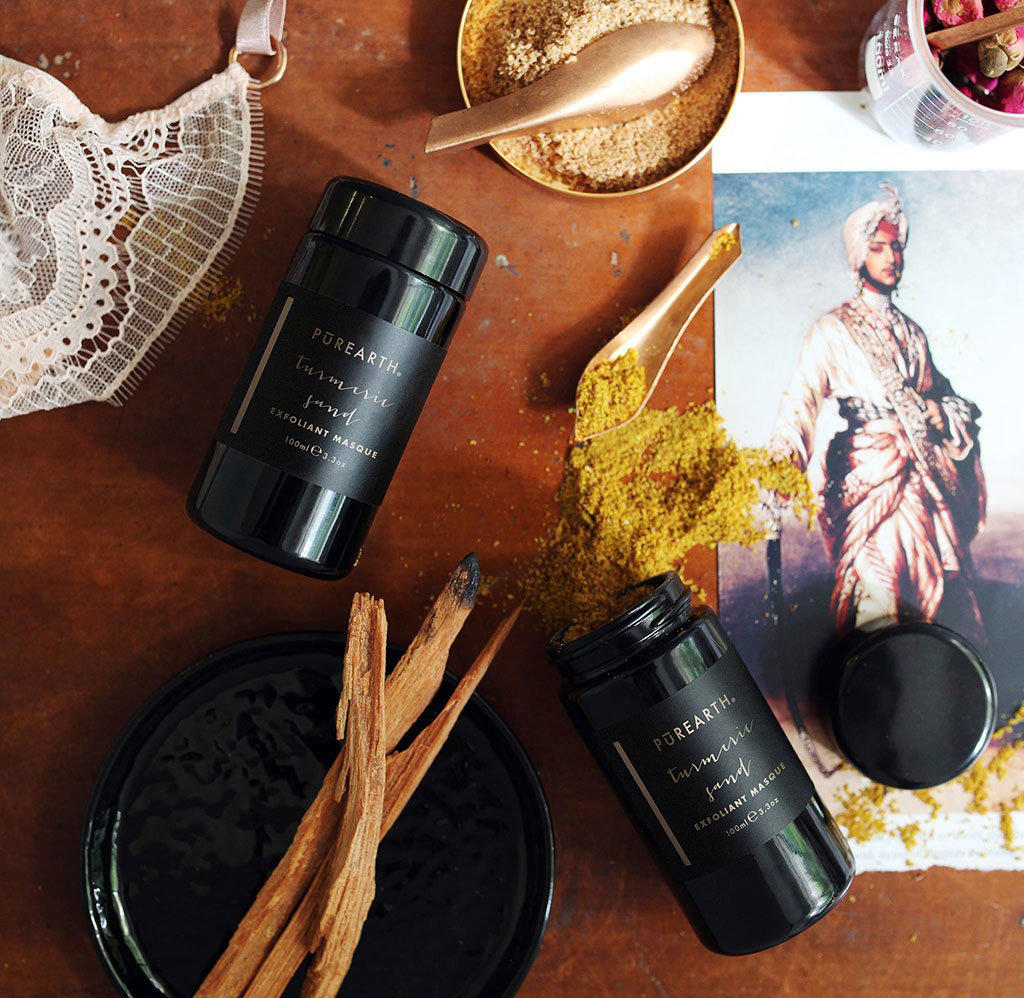
With Purearth, I've worked with Ayurvedic doctors for the formulations and I've studied Ayurveda myself. For example, my mask. It is a synergistic composition where it can balance and pacify all dosha types. Whatever your dosha type or whatever the balance or imbalance, it'll at least pacify all three of them. Certain herbs are called rasayanas. I talked about seven dhatus, from blood to tissue to muscles to bones to fat etc—certain herbs will pacify all. Certain herbs will derange or disturb. My formulations are very carefully composed so that they can pacify and help. For example, the rose water. You can drink it, it's so pure that you can spray it in your eyes. It has, inherently, mild astringent properties. It can help with acne, but it's also very moisturising. The volatiles in rosewater are known to be great for mature skin. So, it's good for all skin types. My mask has honey, but then again, I've balanced it. It's got butters but I've balanced it with a lot of Ayurvedic herbs that can take care of acne. It's got clays that can remove excess oil and brighten skin and heal skin. So, if you have congested skin because of whatever and also pollution, it can balance all of that out and pacify dosha issues. They're all carefully composed in that way.
CHRISTEL: So how did you come to a place where you wanted to start your own skincare label? You're obviously so knowledgeable and you've had fingers in many different sorts of pies.
KAVITA: I didn't. I wasn't seeking to even be an entrepreneur or even start my own brand. I'm a lawyer. I was a Wall Street lawyer then I was with Deutsche Bank. Then I actually studied Ayurveda in 2001. And then I was almost the first yoga school in Hong Kong in 2003.
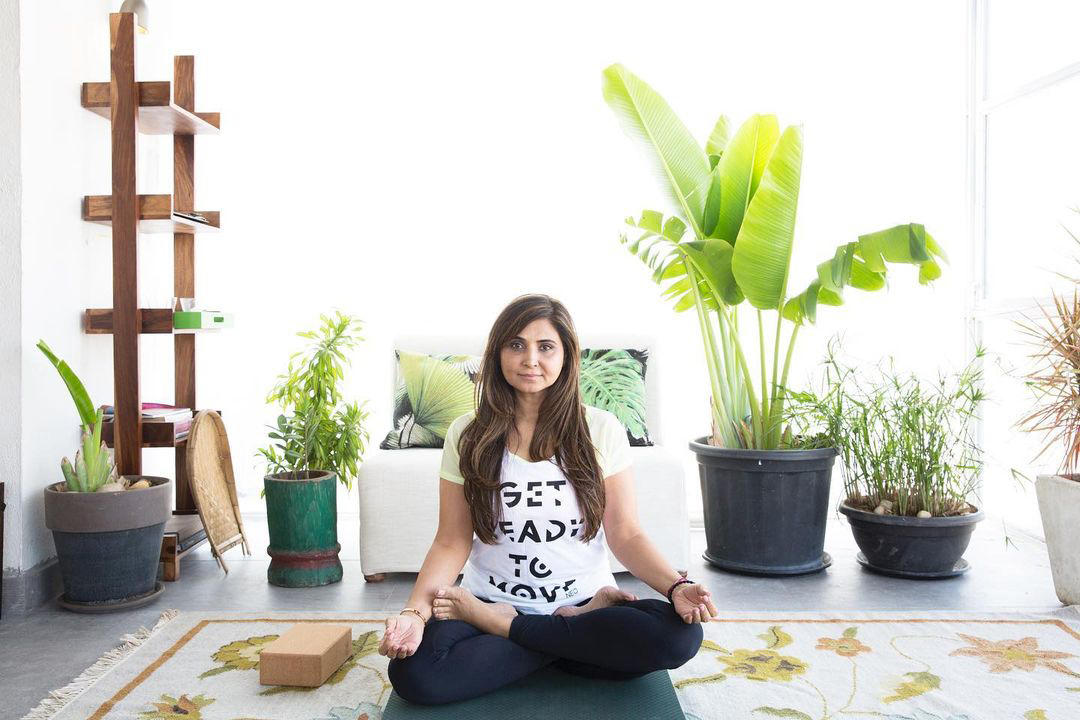
Yeah, there were one or two yoga schools in Hong Kong at that time. Not even a school. Studio. I ran that for three years. It was on a sort of donation basis. Ever since I was a child, this has been my true calling. I don't know why I studied law. I was a successful lawyer, but all along I wanted to hang up my boots and do what I'm so passionate about. And I didn't want to start a skincare business or brand or whatever. I just wanted to be very rooted with the earth. Connected and also be able to find a way to offer livelihood support to women in India.
I didn't want to start a charity. And then somebody introduced me to the concept of a social enterprise, which you can say is doing well by doing good. Or doing good by doing well, you know? So it's a for-profit but the profits are used to give back into the community. Because to me, charities are great and I always say this: you need schools and hospitals and a room to read because there are so many less privileged, and so it behoves society and institutions or corporates to give back that way. But that's never empowering for the receiver, you know?
What's truly empowering and what levels the playing field is when there is fair trade, not aid, you know?
CHRISTEL: Yes.
KAVITA: It was just carte blanche. I went into India. I didn't know where, what I would do or what it would be. It could have been pottery. It could have been food. I don't know. But of course, it's always my love for botanicals and ingredients and I have studied Ayurveda so deeply over two, three decades, and I've practiced it. And from there was born a skincare brand.
CHRISTEL: Amazing. Amazing. Kavita, you're inspiring and thank you so much for sharing your wisdom today. You somehow managed to encapsulate it all in such a small time.
KAVITA: Yes. Thank you!


